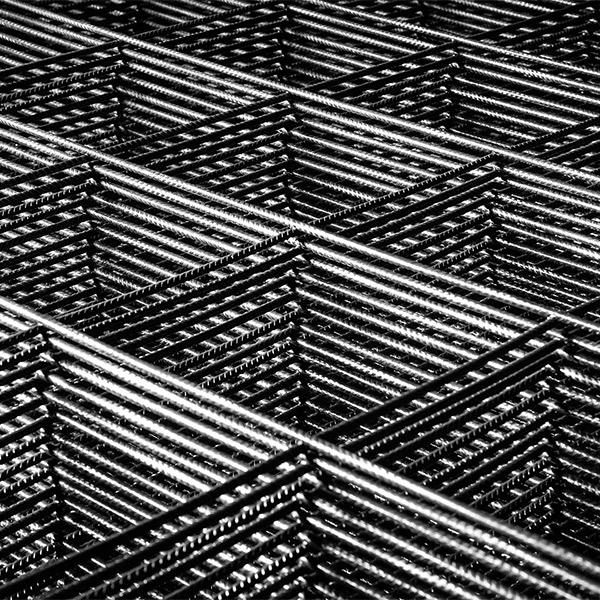Aug . 19, 2024 13:57 Back to list
Welded Wire Fabric Solutions for High-Quality Concrete Production and Construction
Understanding Welded Wire Fabric in Concrete Construction
Welded wire fabric (WWF) has become an essential component in the field of concrete construction due to its ability to enhance the structural integrity and durability of concrete structures. As a widely used material, it is vital for manufacturers and specifiers to understand the properties, benefits, and applications of welded wire fabric in concrete.
What is Welded Wire Fabric?
Welded wire fabric consists of a series of wire strands arranged in a grid pattern that are electrically welded together at their intersections. This fabrication process creates a strong, reliable reinforcement material that can be used in various concrete applications. The fabric is typically made from high-quality steel, which provides significant tensile strength to the concrete mix.
WWF is manufactured in various gauges, spacing, and dimensions to cater to different construction needs. These variations allow engineers and builders to select the appropriate type of welded wire fabric based on the specific requirements of a project, including load-bearing capacity and exposure conditions.
Benefits of Using Welded Wire Fabric
1. Enhanced Strength and Stability One of the primary advantages of using welded wire fabric is that it significantly enhances the tensile strength of concrete. This is particularly important in applications subject to dynamic loads, such as highways, bridges, and industrial floors. The uniform distribution of reinforcement leads to improved structural stability and reduces the likelihood of cracking.
2. Efficient Installation Welded wire fabric is easier and faster to install compared to traditional reinforcing methods. Since the fabric comes in large sheets, contractors can cover extensive areas quickly. This efficiency not only saves time during construction but also reduces labor costs associated with the installation of individual rebar pieces.
3. Cost-Effectiveness By streamlining the construction process, welded wire fabric can lead to significant cost savings. Its durability reduces the need for maintenance and repairs over time, making it a more economical choice in the long run. Additionally, the reduced labor requirements during installation further contribute to overall project savings.
4. Versatility Welded wire fabric can be used in a variety of concrete applications, including slabs, pavements, walls, and precast concrete products. Its versatility allows it to be tailored to meet the specific demands of different construction projects, making it an invaluable resource for builders and engineers.
welded wire fabric concrete manufacturer

5. Sustainability In today’s construction industry, sustainability is a crucial consideration. Welded wire fabric is often made from recycled steel, which not only contributes to environmental conservation but also ensures that the material has a reduced carbon footprint. Additionally, its durability contributes to longer-lasting structures, further promoting sustainability.
Applications in Concrete Construction
Welded wire fabric is commonly used in various concrete structures, including
- Floor Slabs In commercial and industrial buildings, WWF is frequently used in the foundation and floor slabs to provide enhanced support and prevent cracking.
- Pavement Design Many roadways and parking lots employ welded wire fabric in their design to withstand heavy traffic loads and reduce maintenance needs.
- Retaining Walls For retaining walls, WWF can offer added strength, especially in locations where soil pressure is a concern.
- Precast Products In precast concrete fabrication, welded wire fabric is often integrated to enhance strength and support in elements such as beams, columns, and panels.
Conclusion
Welded wire fabric is a critical component in modern concrete construction, offering numerous benefits from improved strength to cost efficiency. As manufacturers continue to innovate and enhance the quality of welded wire fabric, its applications will likely expand, further solidifying its place in the construction industry. For builders and engineers, understanding and implementing WWF effectively can lead to superior construction outcomes, ensuring the longevity and stability of structures for years to come.
-
High-Quality Steel Grating Solutions for Industrial Applications | Durable, Safety, Customization
NewsJul.13,2025
-
Advanced Solutions-CompanyX|Enterprise Efficiency&Cost Reduction
NewsJul.13,2025
-
Sustainable Manufacturing-EcoTech Innovations|Waste-to-Energy System&Zero Emissions
NewsJul.13,2025
-
Welded Wire Mesh- Buildings Wiremesh Co., Ltd.|Durable Construction Material&Industrial Strength Solution
NewsJul.13,2025
-
Smart Production Solutions-Example Corp|AI Automation&IoT Monitoring
NewsJul.13,2025
-
Advanced Industrial Solutions-Advanced Industrial Solutions|Manufacturing Efficiency&Productivity
NewsJul.13,2025

